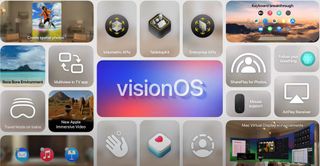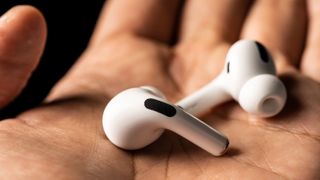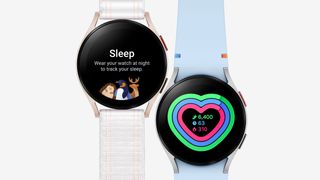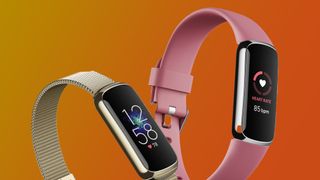This week Apple stole the show with WWDC – its annual developer conference where it showcases the next generation of its various operating systems.
Usually it tacks on a hardware release or two, but this year we got something better; Apple finally unveiled its AI plans. Sorry, not Artificial intelligence, Apple Intelligence (we hate to admit the name is great).
We were also treated to a surprise Galaxy Watch reveal and a new smallest 4K camera. So, in case you missed it, let’s get you caught up to speed on the most important tech news stories in the last seven days.
7. Apple Intelligence entered the scene

As we expected from WWDC 2024, Apple announced a whole host of improvements to its various operating systems, outlining new features for iOS 18, macOS Sequoia, and the rest. But the biggest deal of the event’s opening keynote was, of course, Apple Intelligence.
Apple’s answer to AI will make Siri smarter – so it’s better at understanding the context of your requests, and it can use images, calendar events, messages and other app information to provide in-depth answers to your queries in a matter of seconds. Plus, if it gets stuck, it can always ask ChatGPT-4o; if you give it permission, that is.
Apple Intelligence can also proofread your writing, summarize long documents, and generate custom emojis. Plus, Apple has put privacy at the forefront by saying that its off-device models run on private servers, and any data shared with these servers is encrypted and can’t be accessed by Apple in any way – and your data only exists on the servers for the short time the AI needs it for that specific request.
6. iOS18’s features were laid bare

Apple introduced iOS 18 at WWDC 2024, and when it fully rolls out later this year, it’ll bring with it a large swathe of updates. In fact, iOS 18 looks set to be the biggest update to the iPhone operating system in years, with changes coming to core native apps.
The Mail app, for example, will be able to categorize your emails more logically and provide quick-to-read summaries of them. The Photos app has been overhauled to filter photos by things like themes and screenshots. The Messages app will let users react to texts using any emoji and have the option to schedule messages; the latter could be a game-changer for people with late-night epiphanies.
Other changes will include the option to rearrange app icons and widgets to the bottom and side of the screen and trigger a new dark mode for app icons. Control Center will let you separate widgets into distinct function groups, such as Media and Home.
In short, iOS 18 will provide a smarter, slicker, and more customizable iPhone experience, likely arriving in time for the iPhone 16.
5. Apple set global Vision Pro launch dates

Since its US launch the big question we’ve all been asking is when will the Vision Pro launch elsewhere in the world? Well, we finally have an answer. If you’re in China, Japan, or Singapore, it’ll launch on June 28, 2024, and then two weeks later, on July 12, the Vision Pro will come to Australia, Canada, France, Germany, and the UK.
When it does, it’ll cost £3,499/ AU$5,999 which is pricier than we were expecting based on exchange rates – we thought it might be nearer £2,800 / $5,300 – but it was never going to be the cheapest Apple launch given its US pricing.
Later in the year, the tech will receive visionOS 2, which will come with mixed reality upgrades, spatial photo versions of your flat snaps, and a new train travel mode.
4. Cool free AirPods upgrades demoed for iOS 18

As part of WWDC, Apple announced a quintet of new features coming to certain AirPods models with iOS 18. Full disclosure: none of them are going to blow your mind, but they do represent neat and helpful quality-of-life upgrades – though three of them are only coming to AirPods Pro 2 at the moment, while one will come to AirPods 3 and AirPods Max as well, and one should benefit all AirPods.
The most interesting is Voice Isolation, which uses the audio computation skills that make AirPods Pro 2’s active noise cancellation so effective to cut out wind and any other loud noise around you while you talk.
The second is improved Siri Interactions. If you have AirPods Pro 2, you’ll be able to respond to Siri silently just by nodding your head in the affirmative or shaking your head for the negative. Cool, no? Next up, Spatial Audio in gaming – and this particular perk is coming to AirPods 3, AirPods Max, original AirPods Pro, and AirPods Pro 2.
Then, there’s lower-latency connectivity, which should, according to Apple, “significantly reduce audio latency”, so another great update for gamers – and when using AirPods Pro 2 with iPhone 15 Pro Max, Apple says you’ll be getting “the best wireless audio latency Apple has ever delivered for mobile gaming.”
Finally, better voice quality in games is coming – although it’s another one just for AirPods Pro 2. Basically, they’ll soon support 16-bit / 48kHz audio, so your voice should come across more naturally, and people should be able to discern your dulcet tones more clearly.
3. The Samsung Galaxy Watch FE was revealed

Following leak after leak, the Galaxy Watch FE finally broke cover ahead of its suspected showing at Unpacked in a couple of weeks. The 40mm smartwatch looks set to deliver features from recent premium smartwatches – such as the Samsung Galaxy Watch 6 – at a much more affordable price point.
It looks like a Galaxy Watch 4 but includes a Sapphire Crystal display and Samsung’s latest wellness tools, including advanced running analysis and a body composition tool that estimates the amount of fat, muscle, and bone you’re made up of – and our tests suggest it’s pretty darn accurate.
When it launches in a few weeks, it’ll be priced at $199.99 for the Bluetooth-only model and $249.99 for the LTE version (around £160 / £200 and $300 / AU$380 respectively).
2. Fitbit fans mourned the loss of another popular feature

In what is becoming a familiar tale, Fitbit fans had to absorb some more bad news this week following the axing of the platform’s popular web dashboard feature. The reason for the change? Fitbit (and its Google owner) wants people to exclusively use the smartphone app instead.
That hasn’t gone down too well, though, as the web dashboard offers benefits like easier data entry and features like custom meal plans. While Fitbits still certainly have their charms, this disruption means some Fitbit owners are looking to jump ship to rival brands in our guide to the best fitness trackers, including Garmin, Xiaomi, and Apple. And we can’t entirely blame them.
1. Insta360 Go 3S became the world’s smallest 4K camera

Versatility is the name of the game with Insta360’s Go series of tiny action cameras, and in the new Go 3S, many fans got what they wanted the most: 4K video. It’s the latest model in the range and the world’s smallest 4K camera, around the size of a pack of gum.
We’ve reviewed the fully waterproof camera, and it’s super fun for all ages. It has convenient magnetic mounting and a generous selection of accessories. Put simply, you can get shots from angles that are otherwise impossible with other cameras: put it underwater, clip it to your clothing, throw it on a magnetic surface – it’ll record crisp 4K video of the action.
Pair it with the GoPro-style Action Pod and you get a flip touchscreen for easy remote control and viewing. Alternatively, you can use Insta360’s app instead. If you want a bit of fun with a video camera, the Go 3S could now be your best choice.
Services Marketplace – Listings, Bookings & Reviews
